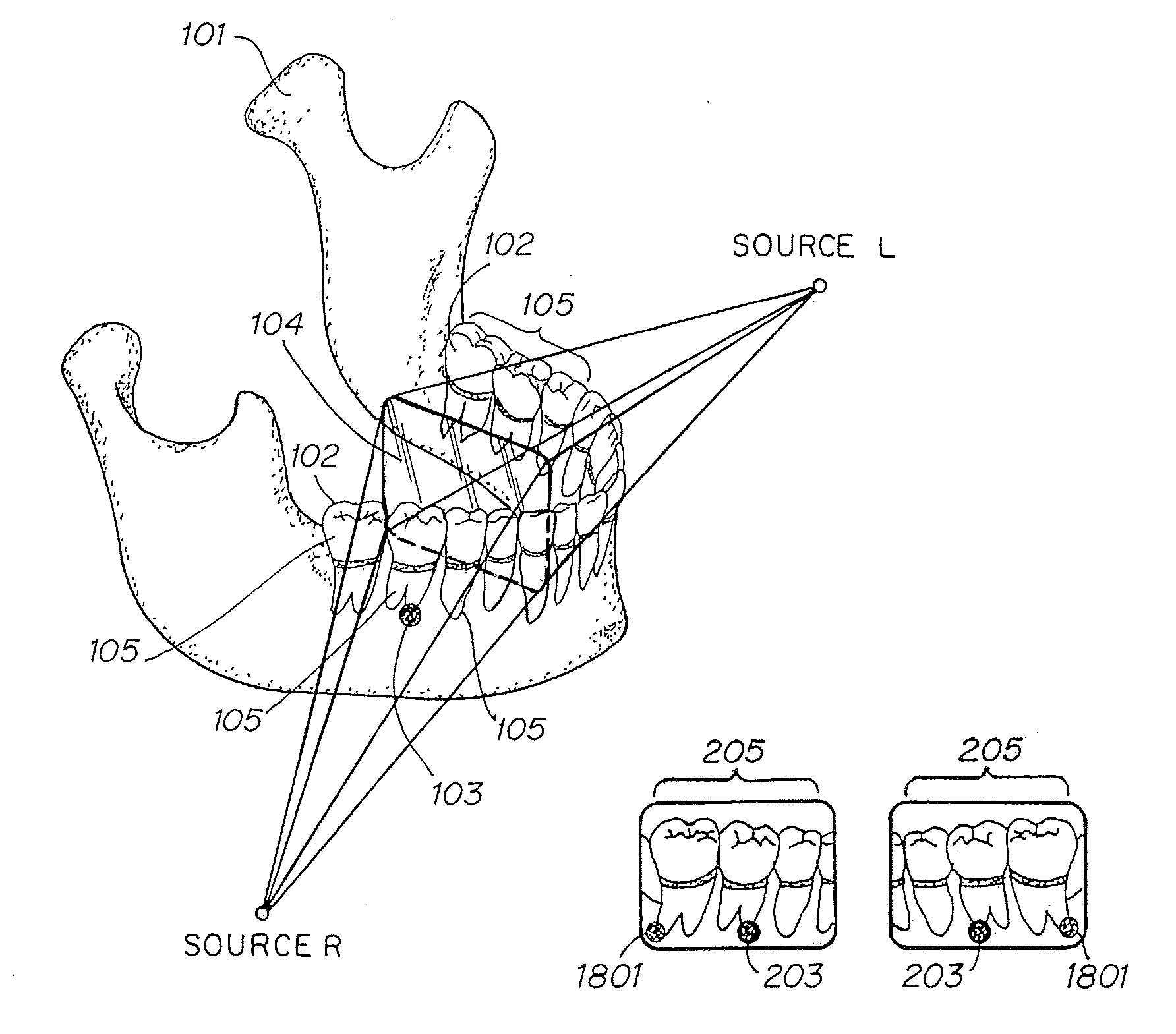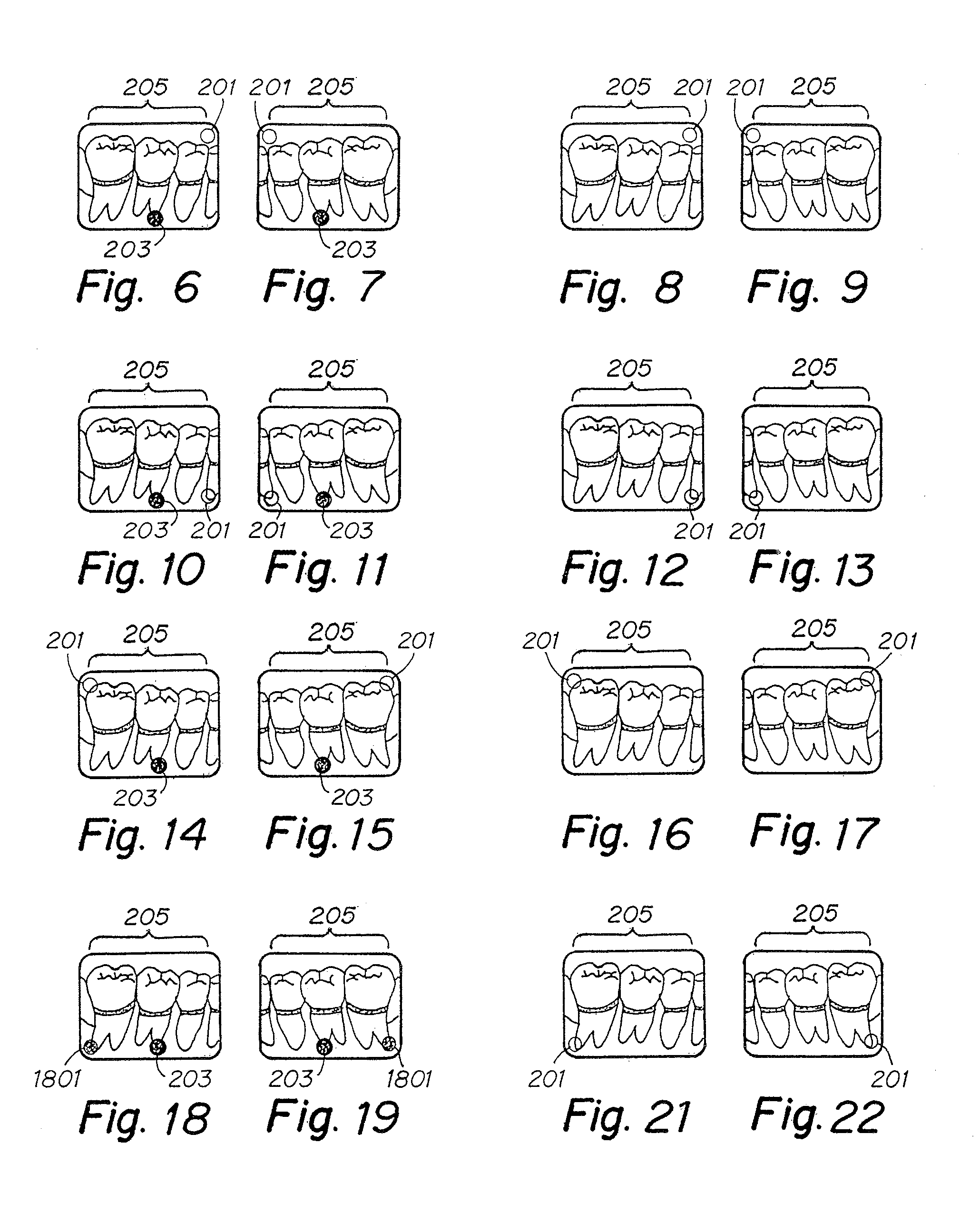Radiation sensitive recording plate with orientation identifying marker, method of making, and of using same
a technology of orientation identification and recording plate, applied in the field of image processing, can solve the problems of inherently unambiguous digital images produced using cameras with detectors such as charge-coupled devices (ccds) that are sensitive to exposure from one side only, and the problem of dental or medical diagnostic images produced on conventional film is somewhat more complicated, and the film thus constructed cannot be oriented on the basis of which side has an emulsion
- Summary
- Abstract
- Description
- Claims
- Application Information
AI Technical Summary
Benefits of technology
Problems solved by technology
Method used
Image
Examples
second embodiment
[0108]If the plate is marked by both a “front side” marker and a “back side” marker, as described in connection with the second embodiment, the direction of exposure of the plate is unambiguously recorded in the image without any intervention or special act by the operator. In addition, the cassette or sleeve in which the plate is placed during exposure can include a radiopaque mark on one or both sides, unambiguously indicating the proper orientation of the cassette or sleeve relative to some absolute reference such as the left side or front of the patient.
[0109]FIGS. 18, 19, 20 and 21 illustrate four images that can be produced using a digital X-ray plate according to this embodiment of aspects of the invention, exposed from each of two sides, using each of two differently located sources, e.g., positioned at SOURCE L and SOURCE R. This embodiment has an open circle mark on the X-ray sensitive side of the plate, in one corner, and a filled circle mark on the other side of the plat...
third embodiment
[0117]In the invention, shown in FIG. 39, the markers are asymmetric, are asymmetrically placed with respect to the plate surface axes of symmetry, and both “front side” and “back side” markers are employed. In the example, the markers 3901 and 3902 are made in the shape of arrows. Of course, markers 3901 and 3902 could be any suitable directional marker meeting the further requirements described in connection with this embodiment. Let us further suppose that the “front side” marker 3901 is a thin, short, horizontally directed arrow pointing at the right vertical edge of the plate at the lower edge of image 3900, while the “back side” marker 3902 is a solid arrow, also horizontally directed at the lower edge of a “landscape” oriented plate, but pointing away from the vertical edge of the plate of image 3900. For purpose of illustration, by virtue of their size and placement on the opposite sides of plane defined by the plate, the relationship between the markers 3901, 3902 produces ...
PUM
| Property | Measurement | Unit |
|---|---|---|
| areas | aaaaa | aaaaa |
| area | aaaaa | aaaaa |
| excitation wavelength | aaaaa | aaaaa |
Abstract
Description
Claims
Application Information
 Login to View More
Login to View More - R&D
- Intellectual Property
- Life Sciences
- Materials
- Tech Scout
- Unparalleled Data Quality
- Higher Quality Content
- 60% Fewer Hallucinations
Browse by: Latest US Patents, China's latest patents, Technical Efficacy Thesaurus, Application Domain, Technology Topic, Popular Technical Reports.
© 2025 PatSnap. All rights reserved.Legal|Privacy policy|Modern Slavery Act Transparency Statement|Sitemap|About US| Contact US: help@patsnap.com



